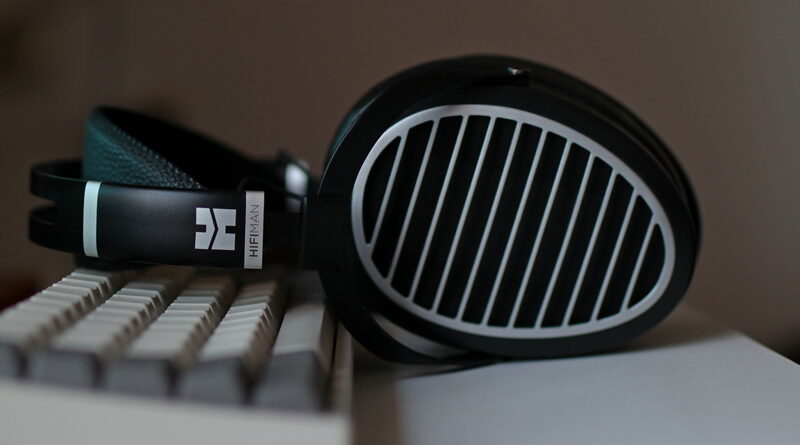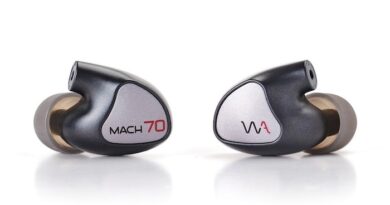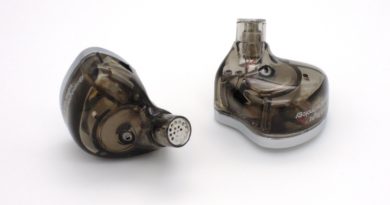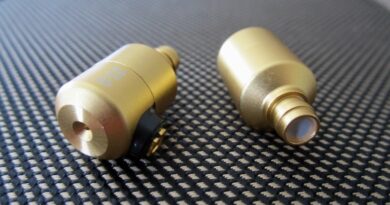HIFIMan Ananda BT Review – Identity Crisis
Pros — Best sounding BT headphone, for now
– Better build quality than wired Ananda
– BT connection is pretty stable/strong once connected
– Numerous codec support
Cons — Shouty upper-mids
– Treble can get sizzly on higher volumes
– No analog input, and USB-mode is useless (for now)
– HIFIMan mobile app is a hot mess
– Not suited for portable/on-the-go usage
– Clamp force can cause hotspot around the temple area
– Status LEDs are infuriatingly bright and distracting
INTRODUCTION
Wireless audio thus far has been associated with “trading absolute quality for the sake of convenience”.
Most of them BT headphones are tuned in a consumer-friendly manner and won’t provide you with the highest resolving capability or technicalities to boot.
Enter HIFIMan Ananda BT.
HIFIMan have been one of the front runners when it comes planar magnetic headphones and the technology itself. Who can forget the legendary HE-6, or perhaps the now defunct yet absolutely awesome Edition X V2?
Despite being late to the Wireless headphone game, they are making up for the gap with the Ananda BT — a headphone that’s wireless, planar, full-size, and open-back. All of these while supporting a great deal of BT codecs including LDAC and boasting a decent battery life of ~10 hours (advertised). That’s a pretty rare combo and makes for a very interesting, potentially groundbreaking product. Who is this targeted towards? Is it the on-the-go audiophile? Is it the home-listeners who don’t wanna deal with wires? Is it for someone who’s looking for ultimate flexibility? And of course — will it sound good enough?
Hopefully all of those will be answered once we’ve gone through the review.
Note: the ratings given will be subjective to the price tier. HIFIMan was kind enough to send me the Ananda BT on loan as part of a review tour. Disclaimer.
Sources used: LG G7 (forced LDAC, 96KHz, 32 bits/sample, 990/909 kbps), iPhone SE (AAC default)
Firmware version: 190929
Price, while reviewed: ~$1000.
This review originally appeared on my blog.
PHYSICAL THINGS AND USABILITY
IN THE BOX…
Barebones, in one word. For a $1000 headphone, the accessory pack is not really screaming luxury. You get a carrying case that barely fits the headphones and isn’t particularly premium, inside of which in a pouch you’d get the charging cable, a type-C to type-C cable (perhaps for desktop wired use) and a detachable mic. The mic is pretty poor and has a constant buzz when used via USB mode (I couldn’t get it to work in BT mode).
And that’s about it. It does have everything one may need, but the quality is just adequate and it seems it’s one of the areas where HIFIMan chose to cut corners.
3/5
APPEARANCE, HAPTIC, AND BUILD QUALITY
The overall build quality is a mixed bag. On the plus side, the yokes are made of metal and quite sturdy, which is already an improvement over certain previous high-end HIFIMan models (e.g. Arya). They’ve also added a helpful swivel mechanism that wasn’t there in the wired version of the Ananda. The earpads themselves are roomy enough even for larger ears and has a pleather outer/velour inner. This is a pretty good combo for comfort, though the foam inside felt a bit on the stiffer side. The headphones themselves have a polarizing look IMO, and I’m veering towards the negative pole. These look huge and ridiculous once you put them on and there’s nothing svelte about the design. Compare this to the Focal Elex for example, and this one doesn’t really win any beauty pageants amidst such competition. Then again, we are more focused on good sound rather than grandeur looks, so there’s still chance for redemption.
At the bottom of the left ear-cup is a host of buttons and ports. First up is the type-C port (thank heavens) and then there is a 3.5mm port. Unfortunately, that 3.5mm port is not for aux-in, rather it’s only for the supplied (and third-party) microphone. That’s a bummer, but let’s move on. Next, we find two buttons, one elongated and another round button. The elongated one acts as the power/pairing mode/play-pause button as long-pressing it will start the pairing mode (denoted by the LED underneath the button pulsing in alternating colors). A note about the LED: it’s too bright and too distracting. I don’t know why HIFIMan chose to use such an obviously distracting level of brightness as using these headphones in the dark is a nuisance at times. If you don’t work in the dark much then perhaps you’d be spared, but even when you put them down with the earcups down and the BT connected on the table, the blinking LEDs are there letting you know of their existence.
Finally, let’s talk about the last button — it’s to make the headphones charge themselves. No, they don’t start charging if you only connect them to the outlet. You have to press and hold that circular button to get it into charging mode. I assume this was done to facilitate using it in USB mode (you can connect it to the PC via USB-C), but the ideal thing IMO would have been to make charging mode the default state, and pressing the button would take it into USB mode. It’s not even a behavior you can change so basically you’re stuck with this peculiarity. I do feel that a volume control button would have been great, but that’s a missed opportunity.
Moving up into the headband region, I am not a fan of the suspender for a number of reasons. Firstly, it feels cheap. Secondly, the padding underneath is minimal and doesn’t add much to comfort. Finally, the wire running through the headband can potentially be a point of failure in the long run. Aside from that, the headband adjustment mechanism is spot-on. I did have a niggle on my review unit where the right ear-cup had a very stiff rotation whereas the left one was just fine. Might as well be a unit variation but something to keep an eye on.
4/5
ERGONOMICS, COMFORT, ISOLATION, AND FIT
The Ananda BT is definitely on the heavier side at 460 grams. Fortunately the weight is handled well by the head-band and the slightly higher clamping force of the ear-cups. I did have a problem with the clamping force of the ear-cups as they tended to form a hot-spot around the temple region. Due to the oval shape of the earcups, the area surrounding the temple is larger than the one across the jaw, and this pressure buildup causes discomfort (for me) after about half an hour or so. So do audition them in person if possible to see if these caveats apply.
3.5/5
TECH INSIDE
HIFIMan is using their proprietary NsD (neo super-nano) planar diaphragms here to drastically reduce driver thickness. This apparently results in faster transient response and less distortion, along with a few other perks. The driver area is likely the same as the wired Ananda: 80*50mm, which is quite large indeed. These are still not as large as certain Audeze ones, but this is not a numbers game as driver size is only part of the equation.
Do note that the following impressions are based upon the BT mode of the headphones. I couldn’t get the USB mode to work on my PC/laptop or my phone, and from other impressions it seems to be a common problem. I won’t mind that much, however, since this is a wireless headphone first and foremost. Also, there will be two ratings:
- one rating given on the basis of wired headphones in its price class (because let’s face it — there aren’t too many kilobuck BT headphones out there)
- another rating compared to its meek BT brethren.
Lows: The bass response is mostly flat from the upper-bass to the mid-bass region. Such linear bass response is something HIFIMan has nailed down for quite a while so nothing surprising when compared to their other products, but when looking at other BT headphones a stark contrast arises. This is the most balanced “bass” that I’ve seen a BT headphone offer, period. No mid-bass hump or high sub-bass shelf like Bose/Sennheiser (I won’t mention Beats because that meme’s been overused). There’s zero mid-bass bleed and bass overall is clean, punchy, if a bit on the lighter side.
The problem area with the bass is the sub-bass region. The sub-bass starts a gradual roll-off around 60Hz, which turns into a sharp roll-off at around 30Hz. You won’t get ear-rattling sub-bass response, neither the sub rumbles will be noticeable. Given the open-back nature of the headphones though, quite understandable. The bass is enjoyable nonetheless, and rhythmic bass-tracks are replayed particularly well. Case in point: Polyphia’s Crush.
4/5 (all headphones in its price class)
4.5/5 ( only BT headphones)
Mids: The mids are a bit on the thin side with a dip around 1.5KHz. This results in male (esp baritone vocals) losing their depth as the lower octaves are de-emphasized. This dip is then followed by a rather steep upper-mid boost. This leads to a over 15dB differential between the 1.5KHz and 3KHz range, resulting in female vocal prominence along with the sense of boosted “clarity”, which often leads to shoutiness and is not a pleasant experience. Many modern (female) Pop songs sounded too intense in the vocal range for example.
String instruments meanwhile often sound “too crisp”, but it can be beneficial depending on your inclinations and the track being played. Mid-range timbre is bit on the dry side, lacking any warmth or “lushness”. The overall tonality is bright, with that over-emphasized upper-mid being a particular sore spot for long term high SPL (volume) listening. In quieter volume levels these issues somewhat subsided, and the Ananda BT is particularly adept at lower SPL playback being able to fully reproduce the dynamics without needing to push the volume higher up. But for those who want to listen to normal/higher than normal SPL — the upper mid issues will be exacerbated.
3.5/5 (all headphones in its price class)
4.5/5 (only BT headphones)
Treble: Treble is accentuated on the Ananda BT with the 8KHz peak being prominent. This leads to cymbal hits being highlighted with more presence than snares/pedals. Another thing it does is introduce the dreaded s word — sibilance. Listen to Under Pressure by Queen and David Bowie, and the moment the opening lines come up you are hit by a train of ssssssssss. This emphasis also brings out the imperfections in mastering of certain metal tracks, so despite enjoying the forward cymbal strikes and ability to cope up with double bass pedals, I couldn’t use the Ananda BT as effortlessly for metal as I’ve had hoped. Other than that the treble extension was pretty good, with a bit of air added into the mix via a 15–16KHz peak. Overall microdetail retrieval is also at a high level with subtle amp buzzes being picked up in American Football’s Never Meant.
4/5 (all headphones in its price class)
5/5 (only BT headphones)
Soundstage: The overall soundstage is just average in terms of height and width. Soundstage depth is above average which allows some space between instruments. However, sounds that should be very near to the listener are placed slightly farther away, which makes the overall rendition somewhat inaccurate.
3.5/5 (all headphones in its price class)
4/5 (only BT headphones)
Imaging: HIFIMan usually nails down the imaging on their headphones and the Ananda BT is no exception. It has excellent imaging with no apparent “dead-zones”. Due to the limited sound-stage width and height some instruments may not be as far apart or as close as they should be, but their overall placement is spot-on. If you plan to game with them, however, there would be certain issues as trying to figure out enemy distance via footsteps won’t work as well as some other headphones due to the soundstage width limitation. Spatial cues are also rendered well but their distance is quite fuzzy, just as with the footsteps mentioned before. So these might not be the best option if you plan to play competitive fps games.
4/5 (all headphones in its price class)
5/5 (only BT headphones)
Source and Amping: The headphone’s built-in amp was deafeningly loud for me at full volume. Due to Android’s poor native BT volume control (only 10 steps) it wasn’t possible for me to fine tune it. However, I didn’t face the volume issues that many reviewers have faced apparently. I can only guess that some of them might have had Android’s “Absolute Volume” set to on, which is easily fixable via turning developer options on and disabling it. On Windows via BT however fine-tuning the volume was a breeze.
Battery life: Battery life has been pretty good for me throughout the usage. I got about 7–8 hours of playback on average, and considering the type of product it is I’d give that a good grade. However, the recharge time is snail-paced. It takes approximately 3 hours to get fully charged so it’s best to charge it overnight.
4/5
SELECT COMPARISONS
vs Sennheiser HD650: less tight bass on Sennheiser, almost “wooly” bass. The mids definitely sound more balanced and has much better male vocal presentation. Midrange is similarly resolved on both but the Ananda has faster transients leading to them being better suited for electronic and fast-paced music. Treble is laid back more on the HD650 while it is far more up-front on the Ananda BT. So if you were planning to get these as a sort of upgrade to your reference wired headphones, I’m afraid it might not exactly serve that purpose.
vs HIFIMan Ananda: The wired version of Ananda has slightly inferior build quality, but superior sound by a margin. It doesn’t have any glaring upper-mid issues and also can provide some rumble-ridden sub-bass whenever needed. The soundstage is also slightly wider and imaging tad more precise. At $300 cheaper, it’s a great option, though the Sundara is a better value IMO. Moreover, if you absolutely need BT, these are a no-go, but this was a good point of reference to gauge the sound quality loss for going the BT route. It’s not a day and night difference, but it is a downgrade, no doubts there.
vs Bose QC35II: Bose’s wireless headphones have turned into modern classics. Their noise cancellation algorithm is one of the best, they are very comfortable and well-built, and generally has a tasteful V-shaped sound. They are also far more portable and lightweight. Basically, QC35II was custom built for on-the-go usage, and the Ananda BT is the exact opposite. In terms of overall sound quality, Ananda BT eats everything in its path for luncheon. Everything else is on the Ananda BT is undercooked at best.
Other observations:
- The HIFIMan app is unusable at this point. The volume control is completely detached from Android’s native volume control so expect your eardrums to be blown via sudden surge of insane loudness. The app itself is slow, crashes often and is very inconsistent in terms of… everything. This app needs a major overhaul.
- BT signal is very strong overall. Didn’t lose connection even through multiple walls.
- The lack of an analog pass-through is a huge missed opportunity and something I hope HIFIMan implements in the future revision/version of the product.
CONCLUDING REMARKS
The biggest issue that HIFIMan needs to address is the target audience. Who will be the potential customer for these? It won’t be the commuter type, as these are too heavy/cumbersome/non-isolating for that purpose. It won’t be for those who want the absolute best sound quality in general because the wired Ananda is quite a bit better.
The target audience perhaps is a niche within a niche — someone who absolutely needs the BT functionalities without sacrificing too much on the sonic front. It does somewhat deliver on that promise, but it is a rather unfinished product. It feels more like a proof-of-concept rather than a polished end-result.
My feedback to HIFIMan would be to at first rectify the tonal issues and bring it more aligned to the wired Ananda sound. There is also the newly released Deva that seems to cater to both wireless and wired crowd, so it again puts the Ananda BT in an odd spot due to its lack of analog input. The app is chaos digitized, and should be scrapped and rebuilt from scratch with performance and usability in mind. Also, I wouldn’t dare to wear the Ananda BT in public, and everyone that I’ve showed the headphones to wouldn’t want that either.
This is not a particularly fashionable piece of tech, it’s not portable, it’s not isolating, it’s expensive, and it’s not even as good as its wired brother in terms of sound. It is wireless though, and it is the best sound you can get out of a wireless pair of headphones. Pick your cherries.
MY VERDICT
Overall Rating: 3.5/5

DISCLAIMER
Hifiman sent the Ananda BT as a review unit on loan.
Can be bought from Hifiman’s official website.
Our generic standard disclaimer.
You find an INDEX of our most relevant technical articles HERE.











